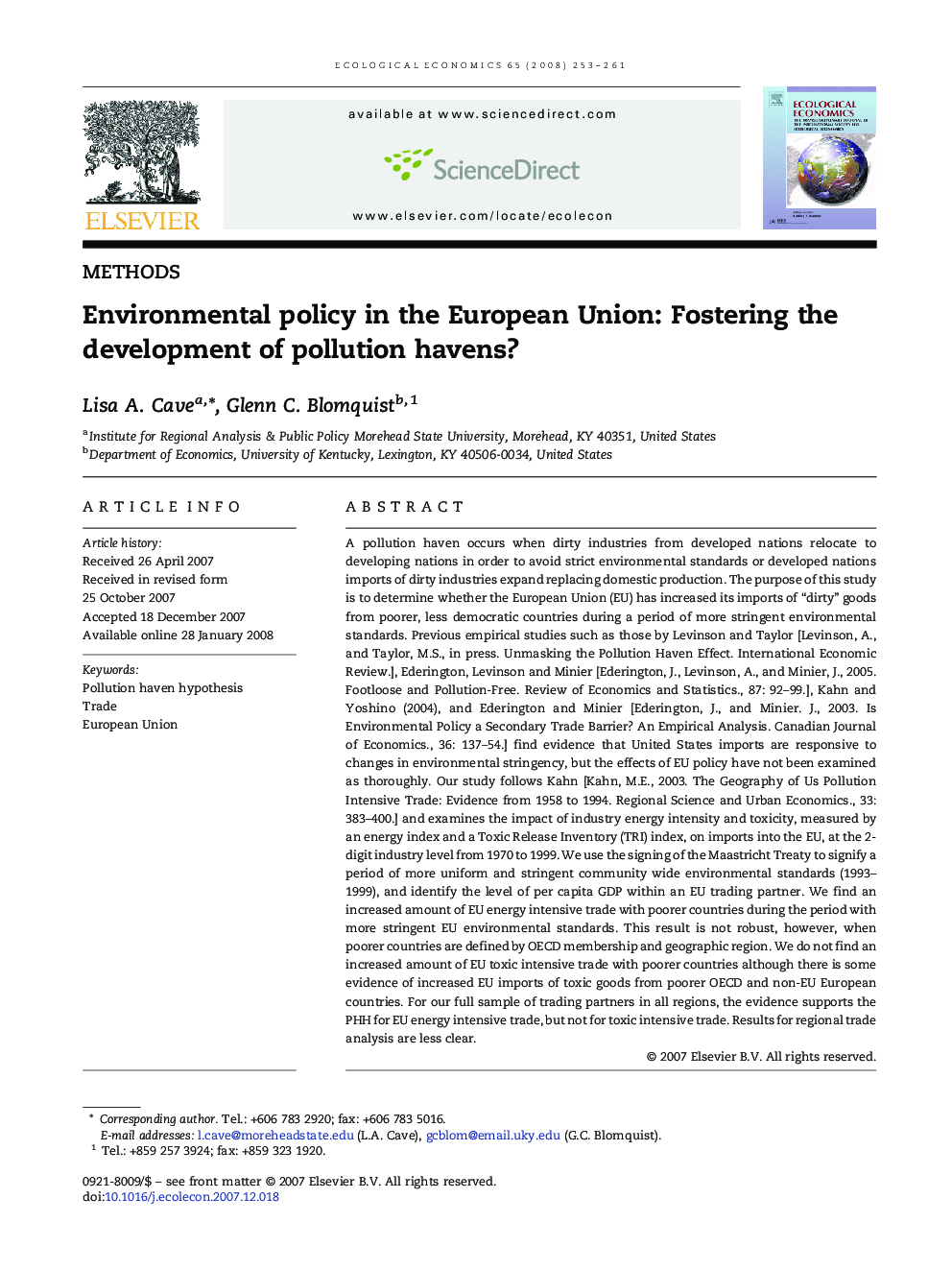| کد مقاله | کد نشریه | سال انتشار | مقاله انگلیسی | نسخه تمام متن |
|---|---|---|---|---|
| 5051890 | 1371140 | 2008 | 9 صفحه PDF | دانلود رایگان |
عنوان انگلیسی مقاله ISI
Environmental policy in the European Union: Fostering the development of pollution havens?
دانلود مقاله + سفارش ترجمه
دانلود مقاله ISI انگلیسی
رایگان برای ایرانیان
کلمات کلیدی
موضوعات مرتبط
علوم زیستی و بیوفناوری
علوم کشاورزی و بیولوژیک
بوم شناسی، تکامل، رفتار و سامانه شناسی
پیش نمایش صفحه اول مقاله

چکیده انگلیسی
A pollution haven occurs when dirty industries from developed nations relocate to developing nations in order to avoid strict environmental standards or developed nations imports of dirty industries expand replacing domestic production. The purpose of this study is to determine whether the European Union (EU) has increased its imports of “dirty” goods from poorer, less democratic countries during a period of more stringent environmental standards. Previous empirical studies such as those by Levinson and Taylor [Levinson, A., and Taylor, M.S., in press. Unmasking the Pollution Haven Effect. International Economic Review.], Ederington, Levinson and Minier [Ederington, J., Levinson, A., and Minier, J., 2005. Footloose and Pollution-Free. Review of Economics and Statistics., 87: 92-99.], Kahn and Yoshino (2004), and Ederington and Minier [Ederington, J., and Minier. J., 2003. Is Environmental Policy a Secondary Trade Barrier? An Empirical Analysis. Canadian Journal of Economics., 36: 137-54.] find evidence that United States imports are responsive to changes in environmental stringency, but the effects of EU policy have not been examined as thoroughly. Our study follows Kahn [Kahn, M.E., 2003. The Geography of Us Pollution Intensive Trade: Evidence from 1958 to 1994. Regional Science and Urban Economics., 33: 383-400.] and examines the impact of industry energy intensity and toxicity, measured by an energy index and a Toxic Release Inventory (TRI) index, on imports into the EU, at the 2-digit industry level from 1970 to 1999. We use the signing of the Maastricht Treaty to signify a period of more uniform and stringent community wide environmental standards (1993-1999), and identify the level of per capita GDP within an EU trading partner. We find an increased amount of EU energy intensive trade with poorer countries during the period with more stringent EU environmental standards. This result is not robust, however, when poorer countries are defined by OECD membership and geographic region. We do not find an increased amount of EU toxic intensive trade with poorer countries although there is some evidence of increased EU imports of toxic goods from poorer OECD and non-EU European countries. For our full sample of trading partners in all regions, the evidence supports the PHH for EU energy intensive trade, but not for toxic intensive trade. Results for regional trade analysis are less clear.
ناشر
Database: Elsevier - ScienceDirect (ساینس دایرکت)
Journal: Ecological Economics - Volume 65, Issue 2, 1 April 2008, Pages 253-261
Journal: Ecological Economics - Volume 65, Issue 2, 1 April 2008, Pages 253-261
نویسندگان
Lisa A. Cave, Glenn C. Blomquist,